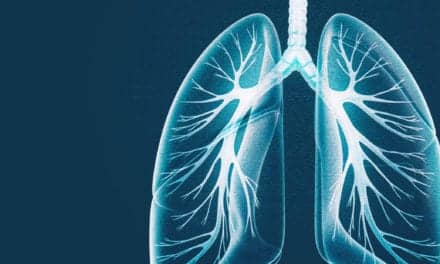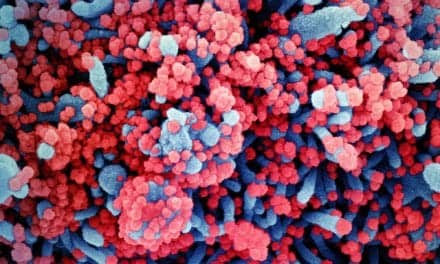Using aerosol therapy on young patients offers a unique set of challenges, but these can be overcome with patient education and the proper selection of delivery devices.
Using aerosol therapy on young patients offers a unique set of challenges. Chief among those is the need to find the appropriate device for a child’s age and developmental stage. “What works for an older child most likely will not work for a preschool-aged child, toddler, or infant,” said Paul V. Williams, MD, allergist, clinical professor of pediatrics, Northwest Asthma & Allergy Center, University of Washington School of Medicine.
Added to this complexity is the issue of acceptance. “For children, there is a fear factor associated with a stranger putting a mask on their face,” said Kay L. Batzer, RRT, clinic respiratory therapist for pediatric pulmonary/cystic fibrosis patients, University Health System (San Antonio, Texas). “It can be difficult to get a child to tolerate it. Children need to be convinced that the aerosol therapy will not hurt, and will actually help.” In Batzer’s experience, letting children look at or handle equipment before therapy is one way to overcome this fear.
Additional challenges working with pediatric patients include those who are incapable of taking a deep breath, or those with nasal congestion, wheezing or coughing. In addition, decreased inspiratory flow, constricted airways, and secretions may inhibit the delivery of medication, noted Kathey Leibold, RRT, clinical analyst, MD Buyline, Dallas, Texas.
Ultimately, if the inhaled medication delivery device is not matched properly to a child there is a high likelihood that the treatment will not be effective or the treatment response will be suboptimal, warned Jason S. Debley, MD, MPH, associate professor, Pediatrics Division of Pulmonary Medicine, and medical director, Pulmonary Diagnostics Lab and Respiratory Care, and director of flexible bronchoscopy, Seattle Children’s Hospital/University of Washington School of Medicine. To make matters worse, the child and parents may misinterpret the inhaled therapy as a failure, when in fact it was due to the delivery method.
When determining which aerosol delivery device to use, consider the patient’s age, the caregiver’s capabilities, the convenience of the device, and the patient’s developmental stage and level of cooperation. Choices include nebulizers, pressurized metered-dose inhalers, dry powder inhalers, and soft-mist inhalers. Here’s a look at each device’s pros and cons.
Nebulizers
Nebulizers are applicable to a wide age range and can deliver a large variety of medications from bronchodilators to inhaled steroids without much effort from the patient other than to breathe. They don’t require coordination between inhalation and actuation or breath hold, and tidal breathing is sufficient for use. The device may be more acceptable in patients with severe respiratory distress. Administrators can combine medications into one treatment.
On the downside, there is considerable waste of medication via an aerosol due to the nebulizer not being breath activated. Most young pediatric patients are unable to properly use breath-activated devices because getting a proper fit can be difficult. “If the nebulizer only has a mouthpiece and the patient is physically unable to hold a mouthpiece in their mouth, then that device is useless,” Batzer said.
In addition, nebulization of medications takes much longer than with metered-dose inhalers. “Many children don’t like to sit still long enough to get the entire dose,” said Williams. Regular cleaning is required, and the nebulizer cup and tubing have to be replaced occasionally.
Pressurized Metered-Dose Inhalers
These inhalers are also applicable to all pediatric patients, especially when combined with a spacer device. Treatment takes only a few seconds, and the device is portable. Several different medications are available in this format, so patients and providers have multiple choices—particularly with inhaled steroids and combination inhaled steroid/long-acting bronchodilators, according to Williams.
The major drawback with these medications is difficulty in proper use. “Patients must hold their head in the correct position, empty their lungs, and slowly inhale the medication simultaneously with actuation of the device,” Williams said. “They must be able to hold their breath for 10 seconds after inhalation. Spacer devices have helped to solve some of these problems, but not all patients are adherent with the use of spacers.”
Dry-Powder Inhalers
Dry-powder inhalers are regarded as easier to use than metered-dose inhalers. “You do not have to time inspiration with actuation,” Williams explained. “Patients simply have to breathe in deeply after the device is loaded.” Often a single inhalation is all that’s needed, which improves adherence, particularly with teenagers.
All dry-powder inhalers come with counters, although that is quickly becoming standard for metered-dose inhalers as well. Several medications are available in this form.
“If the ideal patient is matched with the proper flow rates the device needs, it will be a time saver since it only takes a few seconds to deliver the full dose,” added Batzer. But the patient needs the proper inspiratory flow rate and technique to be able to get the medication out of the device and into the proper areas of the lungs, Batzer said. Most young pediatric patients are unable to properly do the correct technique repeatedly.
In addition, Williams noted that loading the dose differs among all dry-powder inhalers, so the patient needs to know different techniques for different devices. “This can be a problem if more than one medication is required, and if the patient has to change medication because of insurance requirements,” he said. “Head position is also important, and patients must also hold their breath after inhalation.”
Children who are on a dry powder inhaler for their inhaled steroid will need to use a pressurized metered dose inhaler for their short-acting bronchodilator, Williams added. Younger children may have difficulty with use because of the need to perform a forceful inhalation. If the patient has asthma symptoms, dry powders can irritate the throat and cause coughing.
Soft-Mist Inhalers
Mesh or ultrasonic type nebulizers deliver the smallest particle size. Like a standard nebulizer, these devices are easy to use because coordination and breath hold techniques are not a requirement, Leibold explained. Their biggest advantage is that they combine the best of both metered-dose inhalers and dry-powder inhalers. “You don’t need to time actuation with inspiration as carefully and there are no powders to irritate the throat,” added Williams.
On the downside, soft-mist inhalers cost more than standard nebulizers. In addition, they require the purchase of a controller plus proprietary nebulizers.
Leibold pointed out that soft-mist inhalers have similar cons as nebulizers, including the fact that medication must be added to the device; they require electrical or battery power; small children may fight against wearing the mask and may be unable to use the mouthpiece; and treatment time can take up to 15 minutes.
Selecting An Interface
When selecting an interface, consider age and development, as well as coordination. “Infants, toddlers, and most preschool-aged children do not have the developmental skills to coordinate inspiration with actuation of the device and to take a slow deep inspiration and hold their breath for 10 seconds on command,” Williams said. In these age groups, using a spacer with the mask is often necessary.
Ideally, the spacer will have enough volume to actually hold the medication in suspension until the child takes a breath, and have a one-way valve so that expired air does not mix with the medication or act as a rebreather system.
When children are old enough to take a slow inspiration on command and hold their breath, then they can transition to a spacer without a mask. “You can test this in the office by asking them to take a deep breath and hold it when doing the exam,” Williams explained. “We recommend that all children use a spacer with a metered dose inhaled steroid regardless of age, with the possible exception of small particle aerosols. With short-acting bronchodilators, if the child can demonstrate proper technique, then I allow them to use a metered dose inhaler without a spacer, since it is unlikely that an older child or teen will carry a spacer with them.”
Debley, from Seattle Children’s Hospital, recommends making the decision after carefully reviewing the child’s past experiences using inhaled medications and treatment successes or failures.
Proper Administration
Like an interface, the method of administration has to be appropriate for age and developmental ability, but also easy to use. “Patients’ flow rates and ability to control their breath also has to be evaluated,” Batzer said. “In addition, caregivers need to be able to administer the medication, so they need to understand how to properly use the device.”
Debley recommended that hands-on demonstration and training of how to administer inhaled medications with devices be provided to children and their families when medications are prescribed. “A large number of treatment failures result from prescriptions for inhaled medications that occur without proper training on the assumption that the dispensing pharmacy will perform such training,” he said. “Although some pharmacies provide instruction, many do not.” Repeated demonstrations at subsequent visits are often also necessary.
____________________________________________________________
Karen Appold is a contributing writer to RT. For further information, contact [email protected].











I have a nephew that has mild asthma. I never thought about how children might not be able to hold their breath as as well. This could certainly influence the prescription inhalation aerosol method delivery system. Since asthma can run in my family, I’ll have to remember your article if I ever have a child with asthma. Thanks for the information.